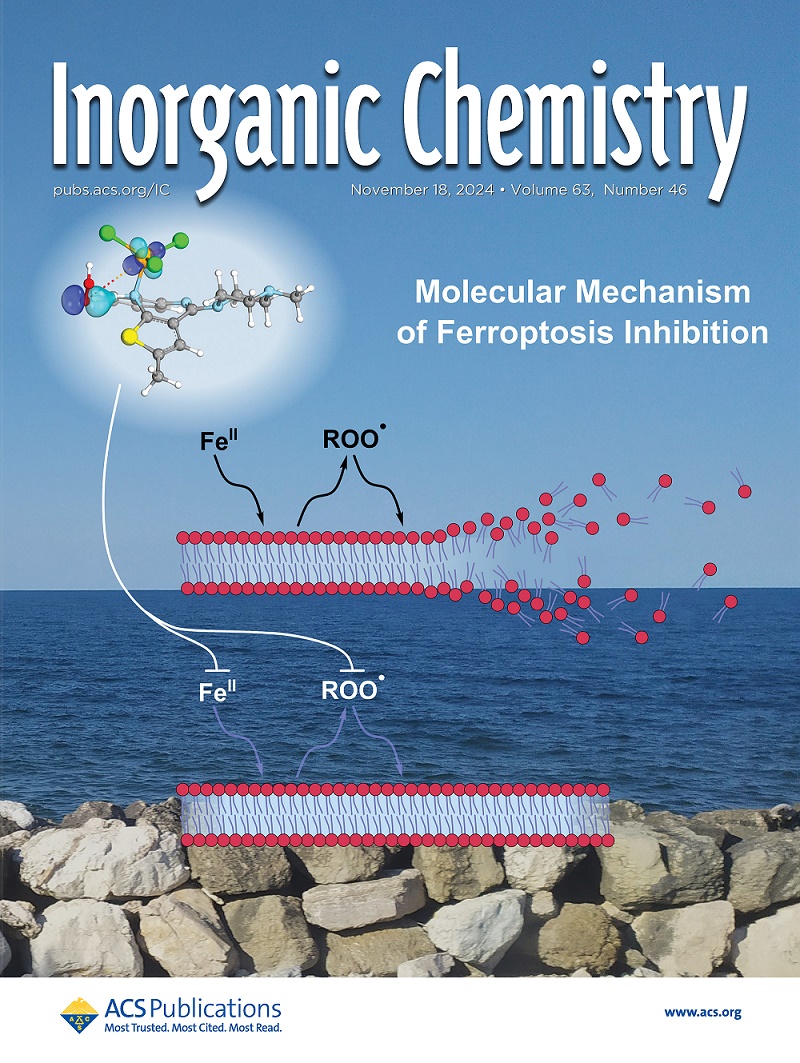Synthesis and Photophysics of the Doubly Cyclometalated Pd(II) Complexes [Pd(C∧N∧C)(L)], L = PPh3, AsPh3, and SbPh3
IF 4.3
2区 化学
Q1 CHEMISTRY, INORGANIC & NUCLEAR
引用次数: 0
Abstract
While Pt(II) complexes containing doubly cyclometalated ligands as tridentate luminophores are well studied, the synthetic accessibility of their Pd(II) counterparts was lacking for a long time. Inspired by a recent report on the synthesis of [Pd(dpp)(PPh3)] involving the C∧N∧C coordination mode (with dpp2– = 2,6-di(phenid-2-yl)pyridine) and following our own work on closely related Pt(II)-based compounds, we produced the series of complexes [Pd(dpp)(PnPh3)] (Pn = P, As, Sb) by optimizing the synthetic procedure and exploring their reactivity in the process. Our study of the electrochemical (cyclic voltammetry) and photophysical (UV–vis absorption and emission, transient absorption (TA) spectroscopy) properties of the Pd(C∧N∧C) complexes represents the first report on their characterization. We observed UV–vis absorption bands down to 450 nm and electrochemical HOMO–LUMO gaps around 3.2 V, which show minimal variation with different PnPh3 coligands. A more pronounced influence of the coligand was observed in time-resolved emission and TA spectroscopy. The highest photoluminescence quantum yield (ΦL) in the series was found for [Pd(dpp)(AsPh3)], reaching 0.06. The interpretation of the spectroscopic data is supported by (TD-)DFT calculations. Additionally, we report structural and spectroscopic data for several dinuclear Pd(II) complexes, including the precursor {[Pd(dppH)(μ-Cl)]}2 and multiple decomposition products of the sensitive compounds [Pd(dpp)(PnPh3)].

求助全文
约1分钟内获得全文
求助全文
来源期刊

Inorganic Chemistry
化学-无机化学与核化学
CiteScore
7.60
自引率
13.00%
发文量
1960
审稿时长
1.9 months
期刊介绍:
Inorganic Chemistry publishes fundamental studies in all phases of inorganic chemistry. Coverage includes experimental and theoretical reports on quantitative studies of structure and thermodynamics, kinetics, mechanisms of inorganic reactions, bioinorganic chemistry, and relevant aspects of organometallic chemistry, solid-state phenomena, and chemical bonding theory. Emphasis is placed on the synthesis, structure, thermodynamics, reactivity, spectroscopy, and bonding properties of significant new and known compounds.
 求助内容:
求助内容: 应助结果提醒方式:
应助结果提醒方式:


